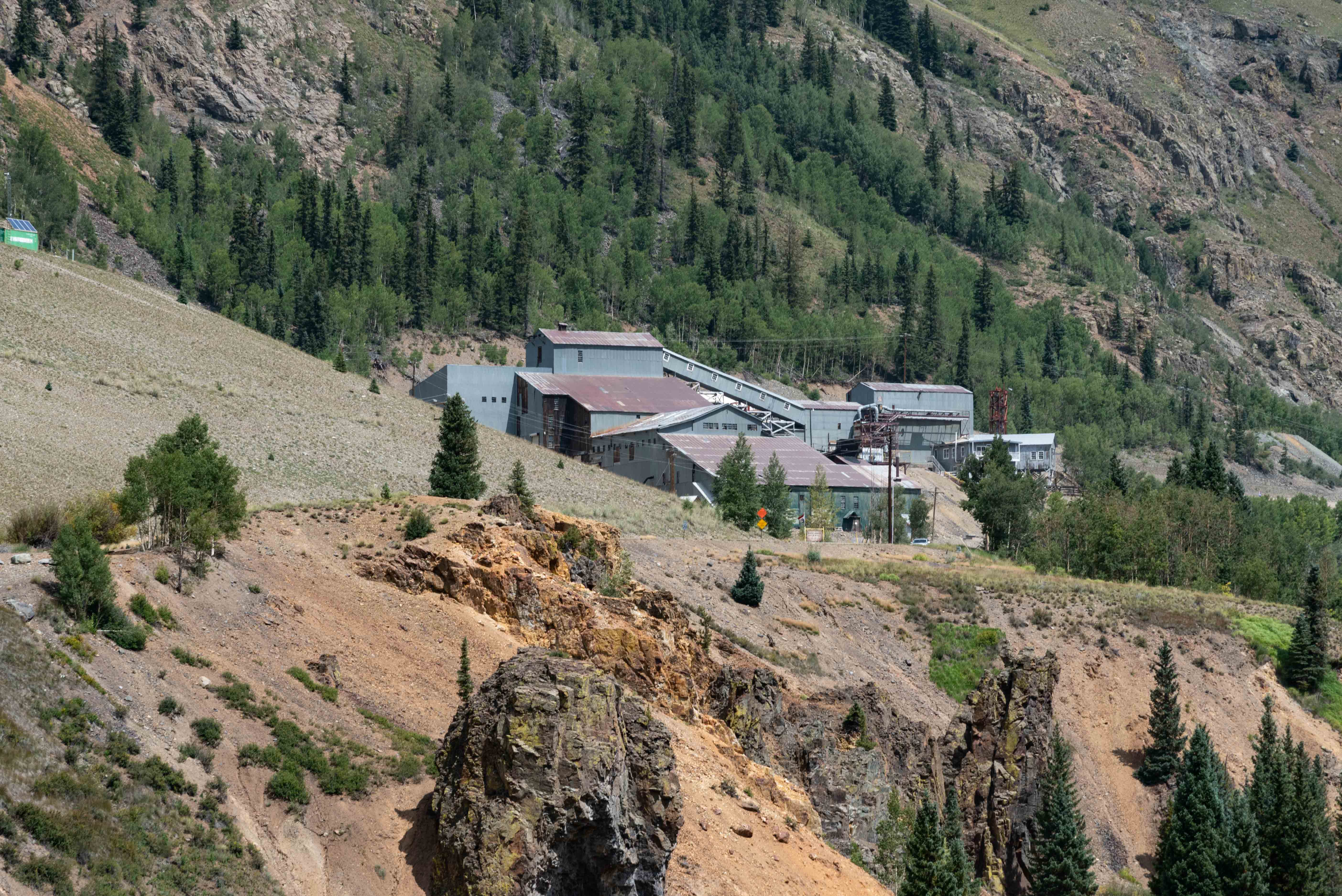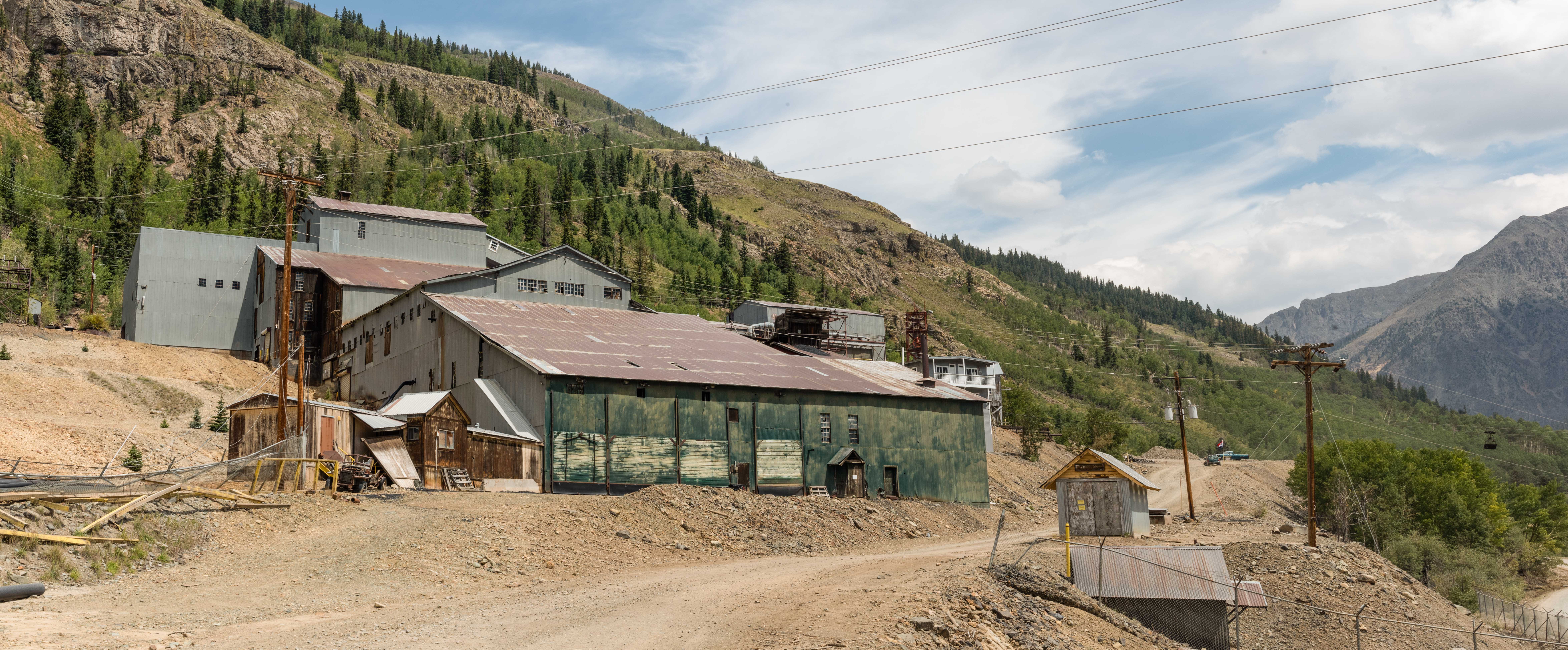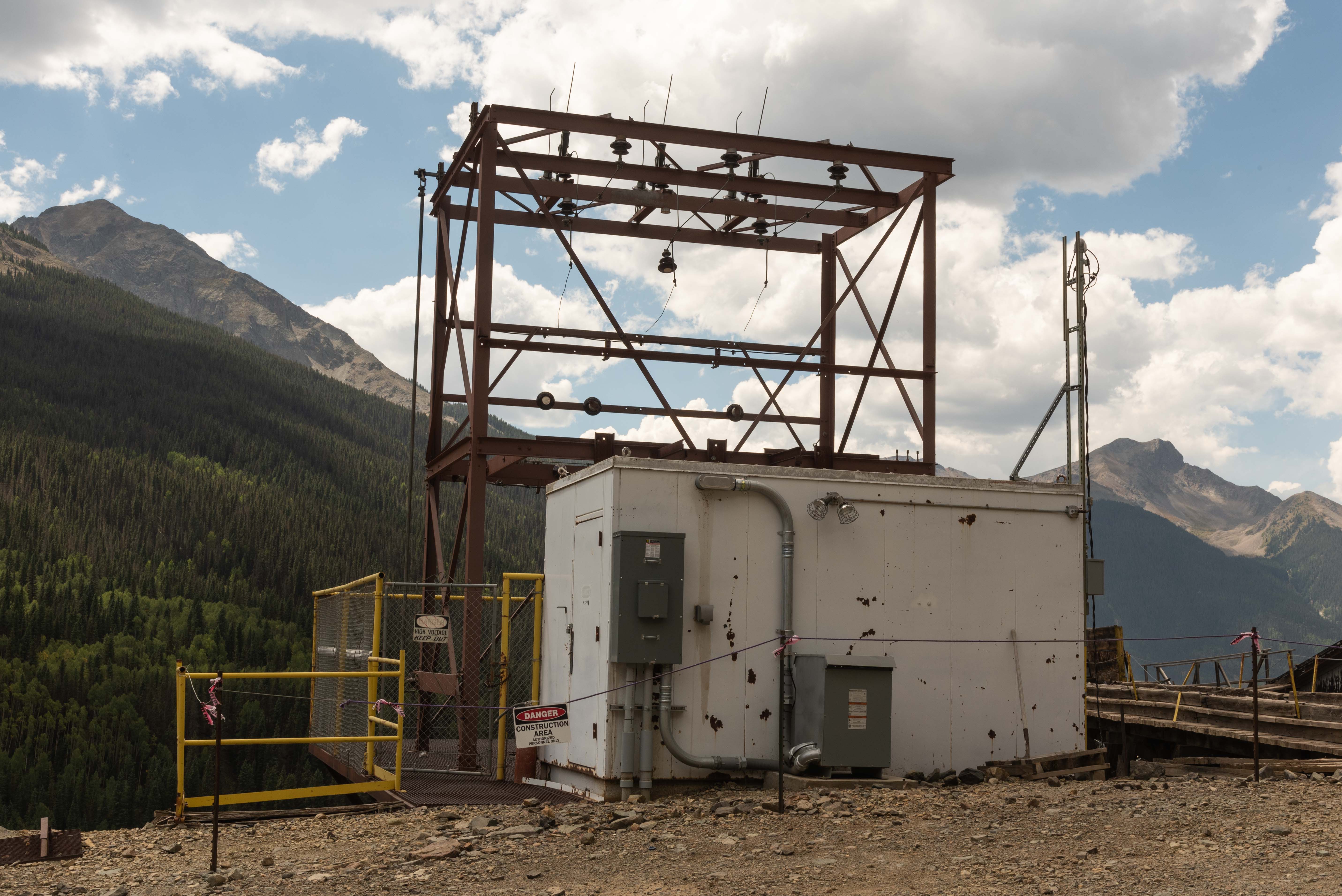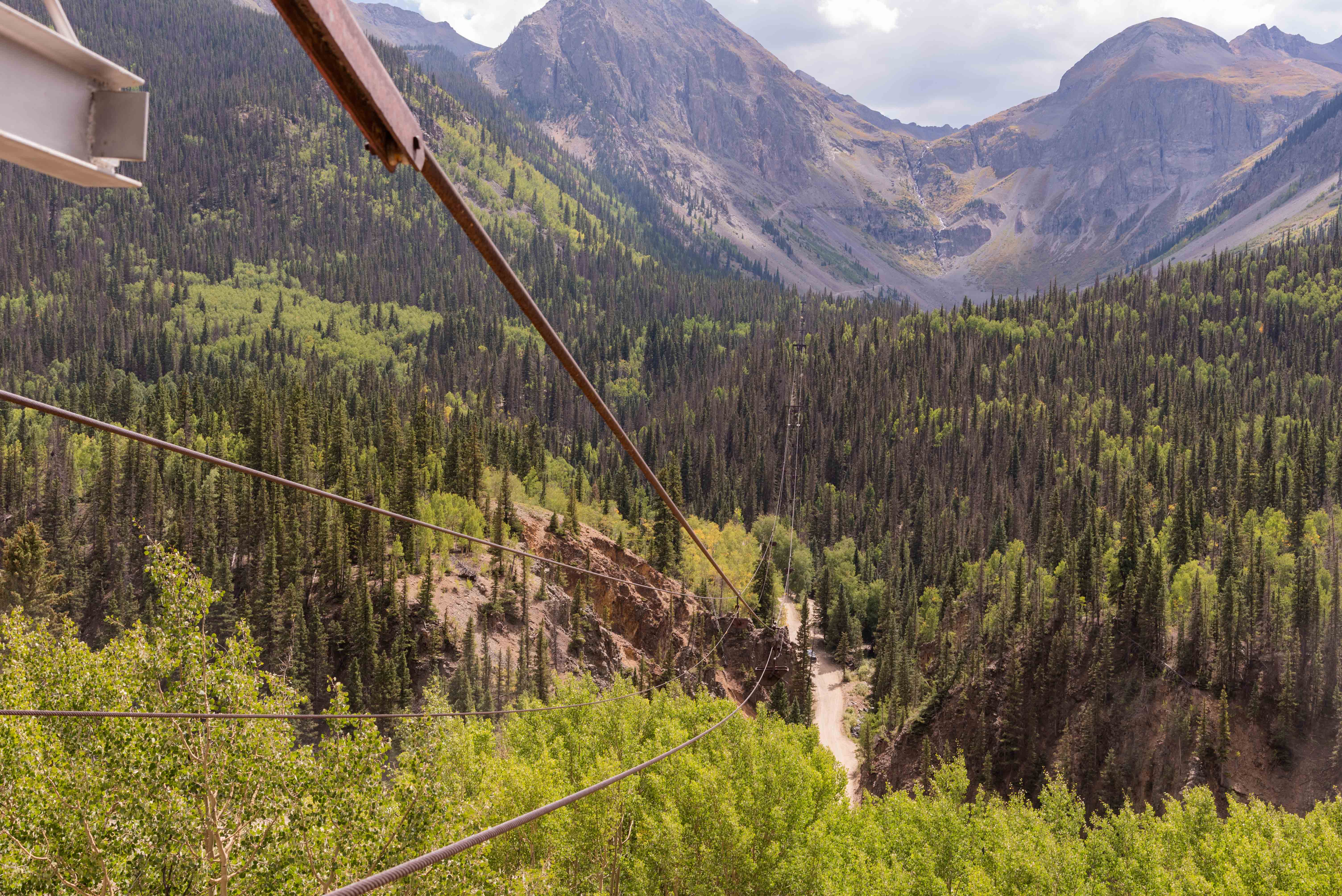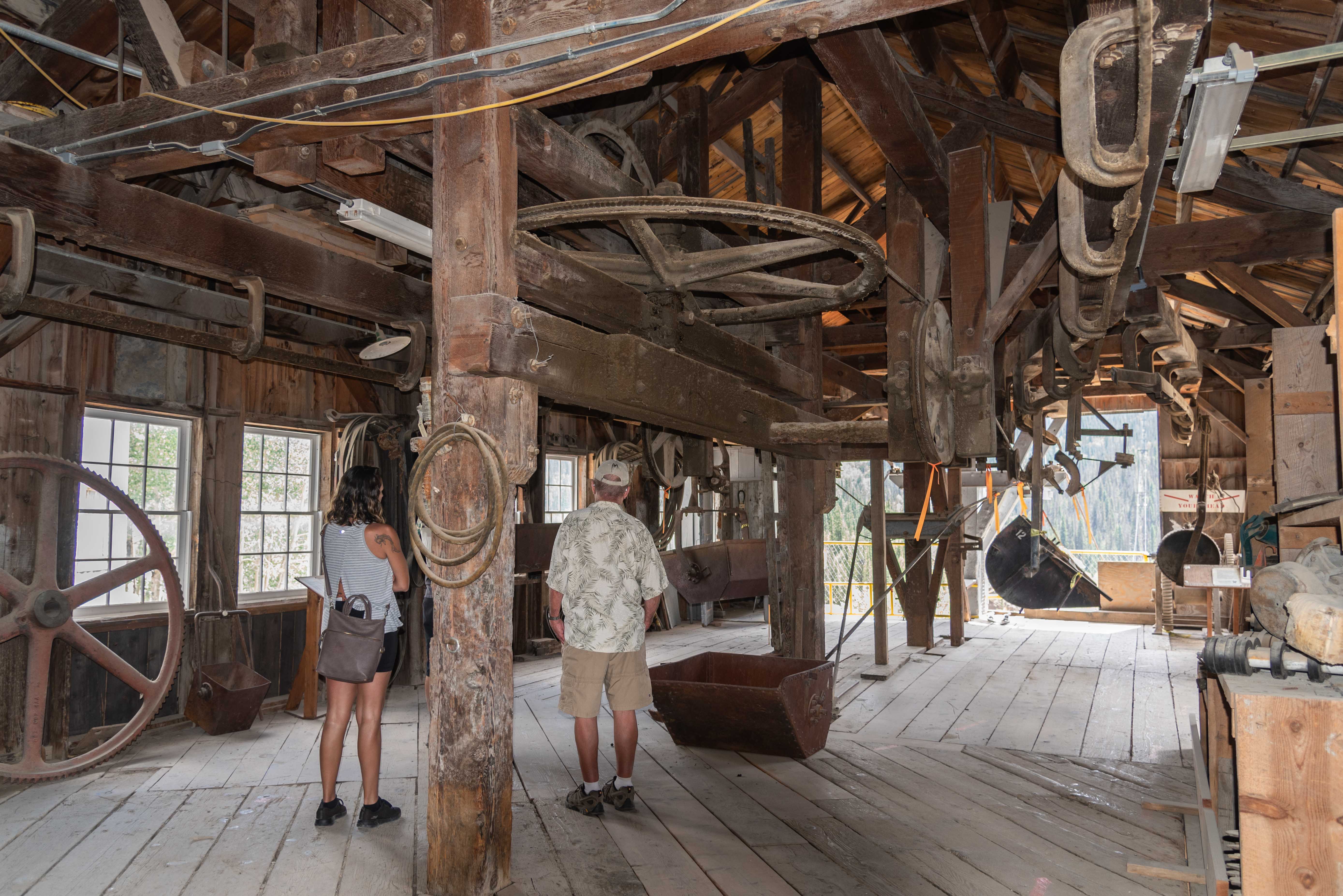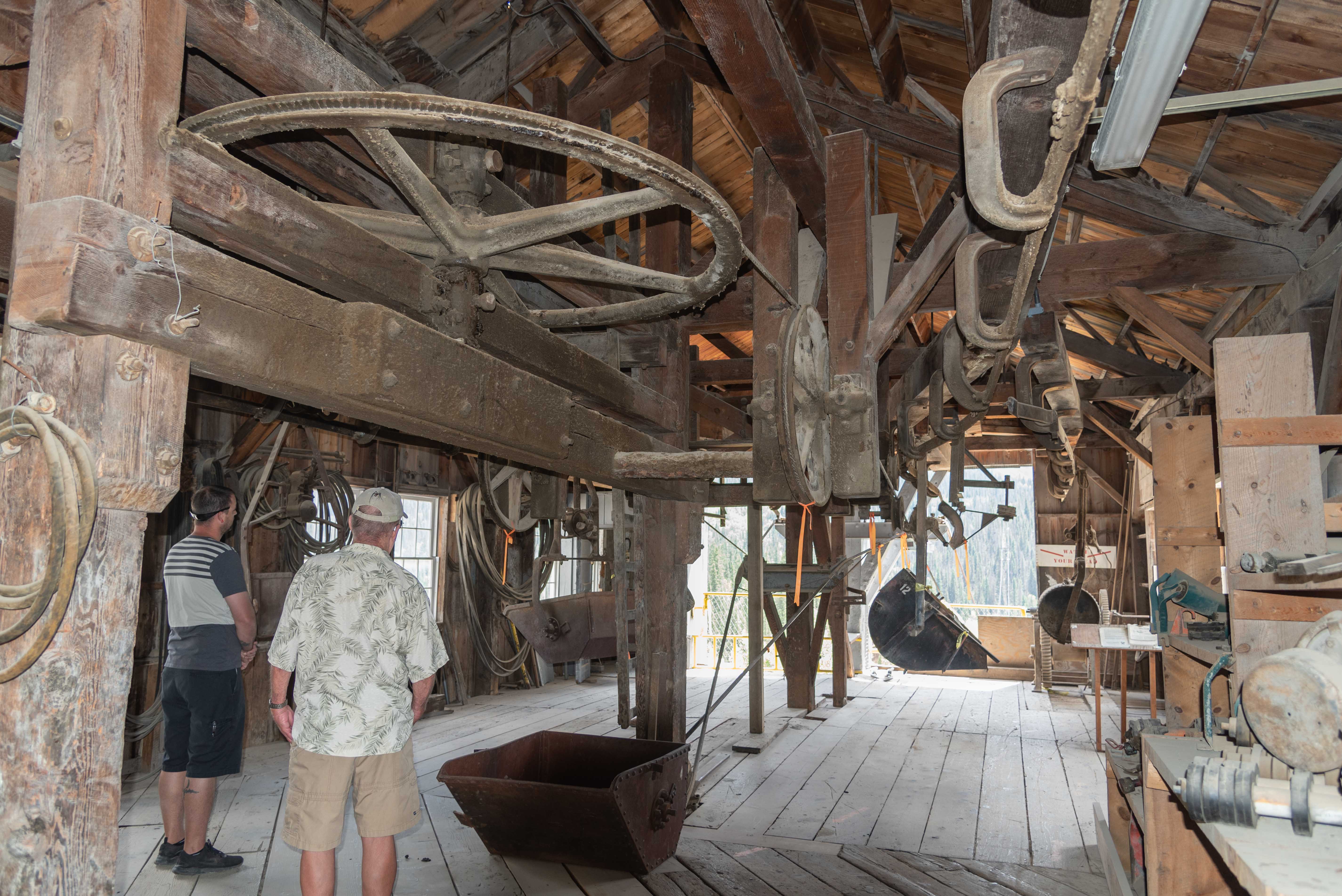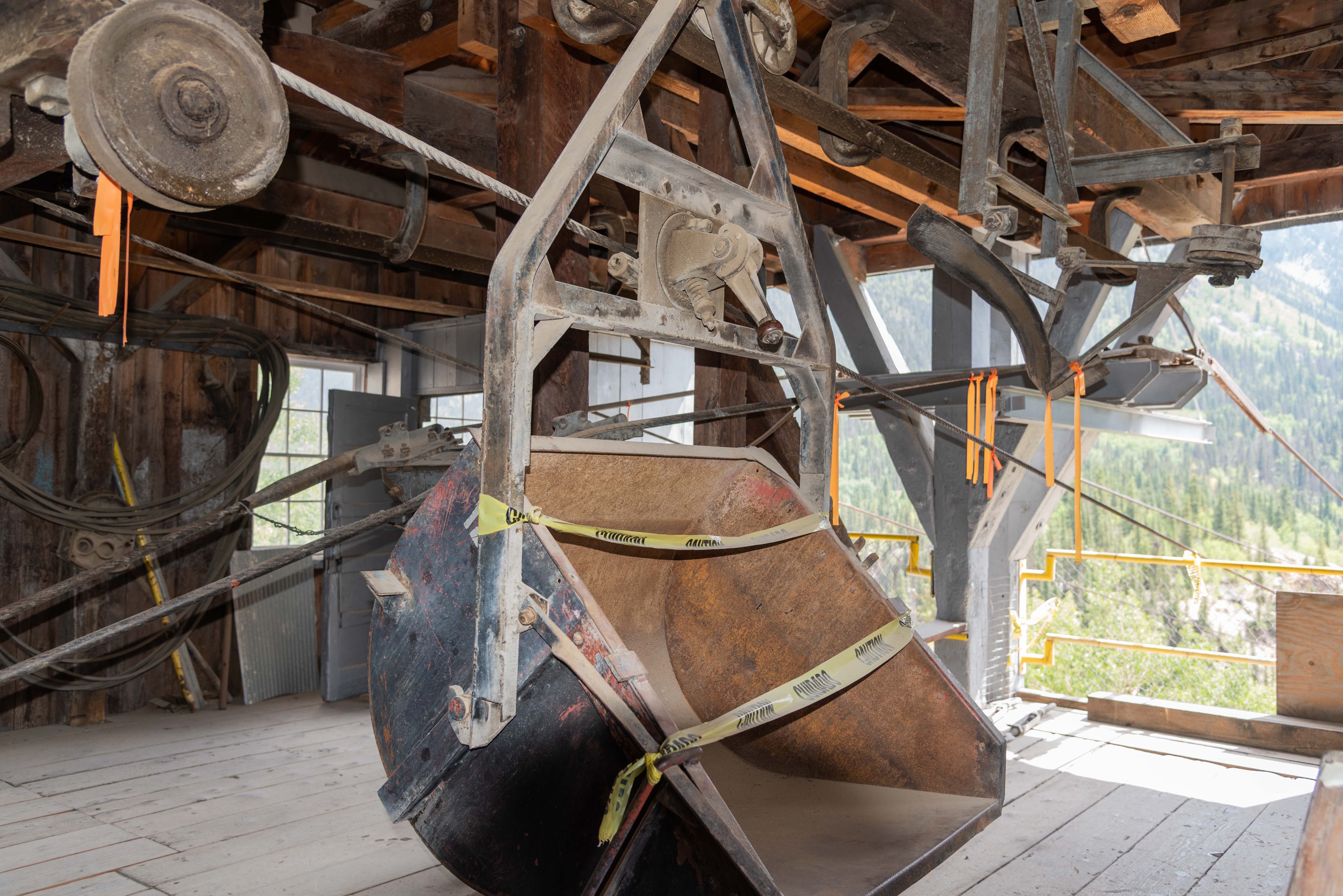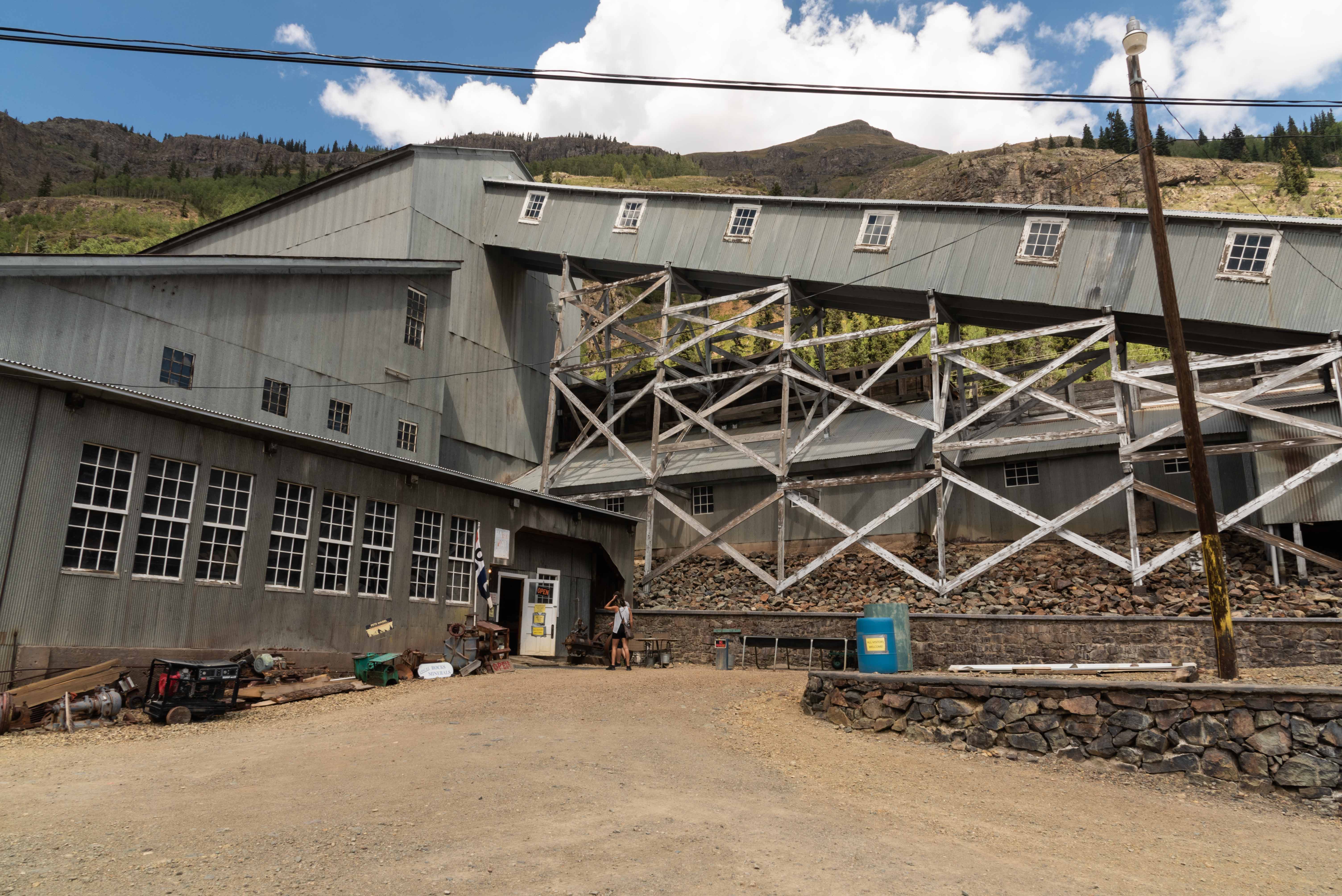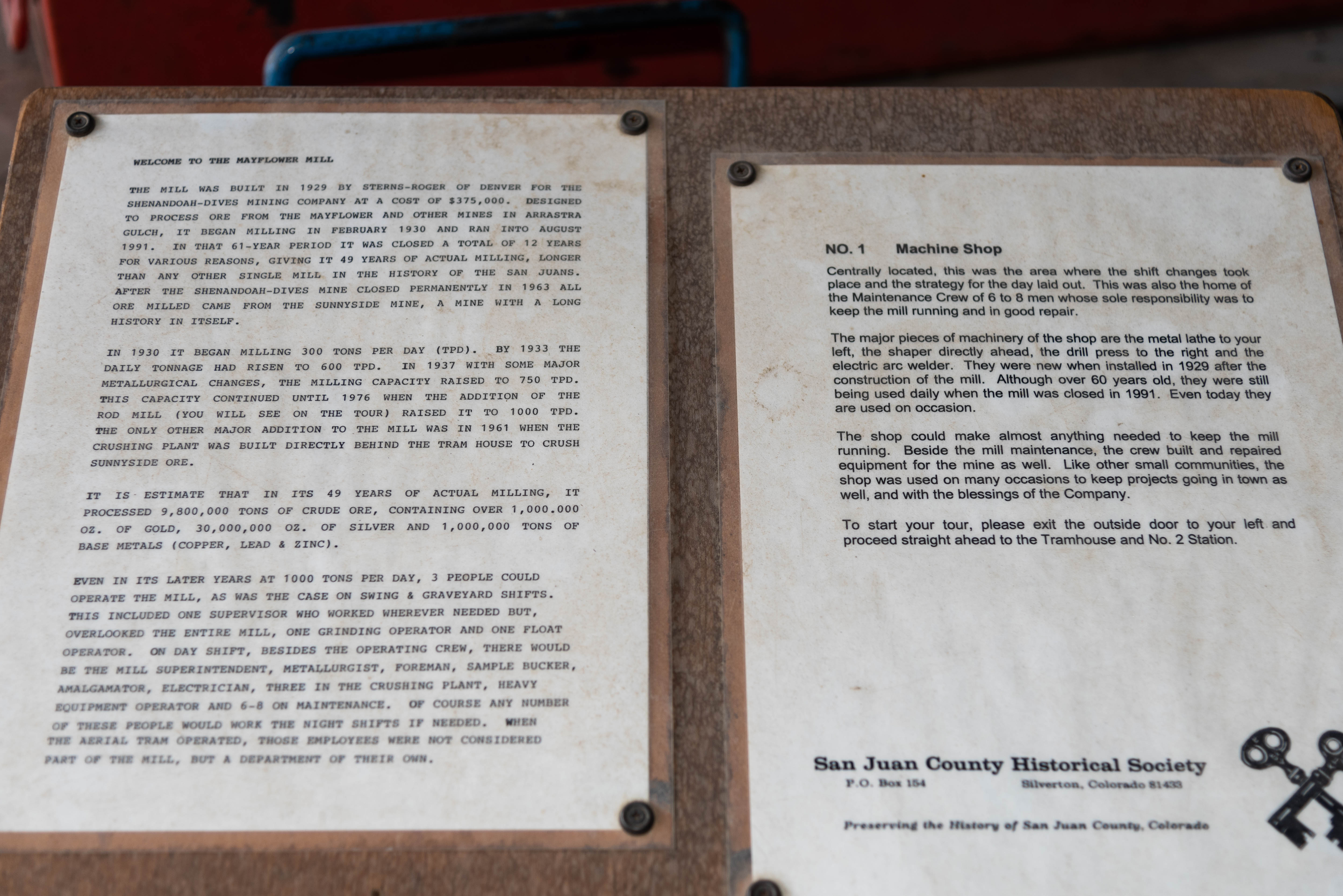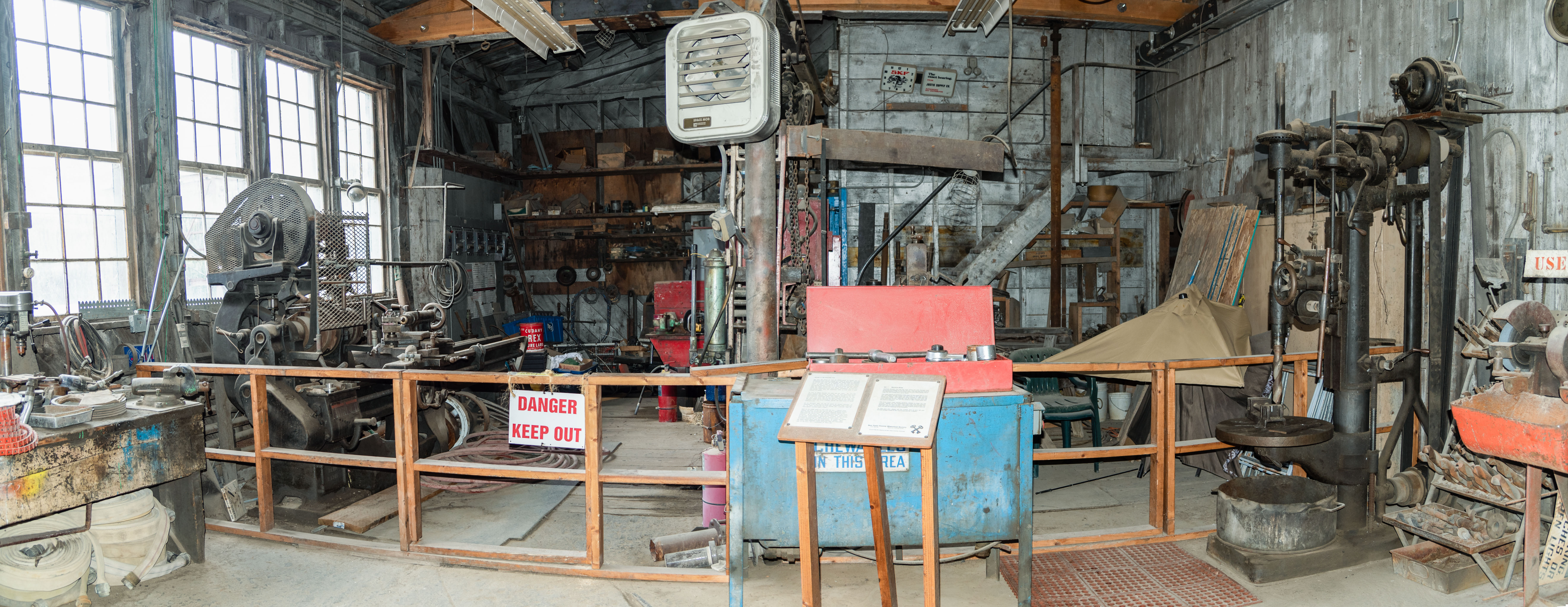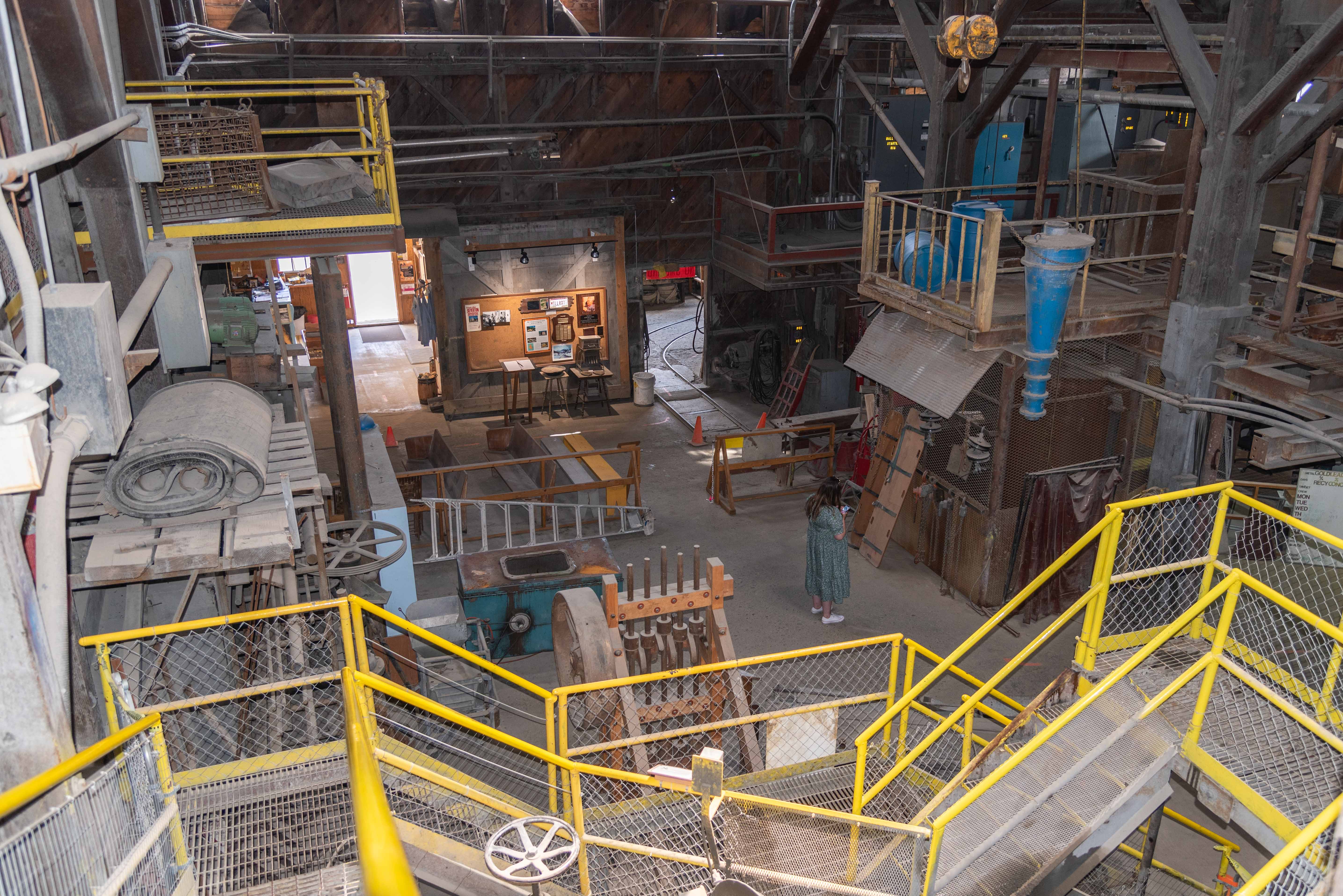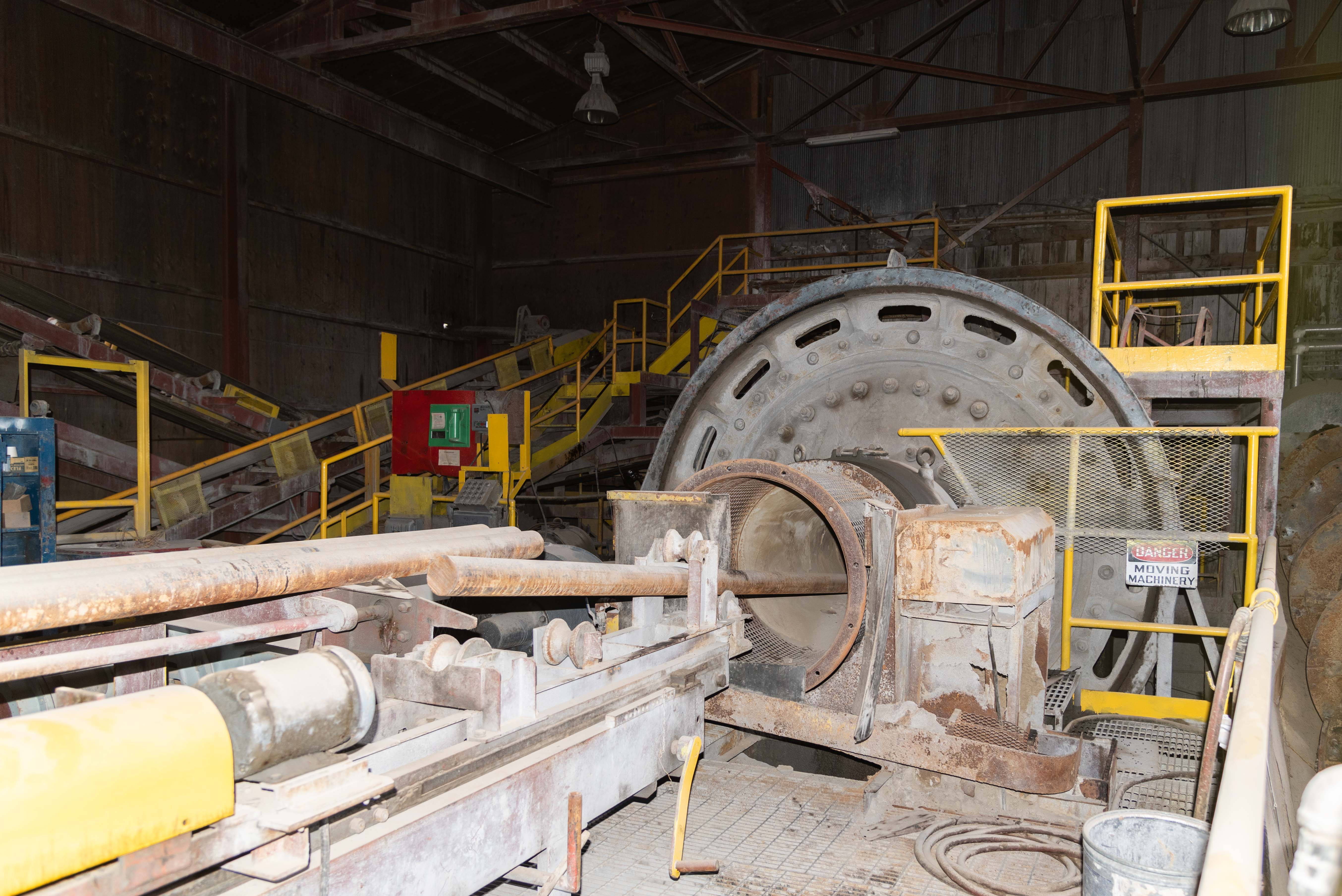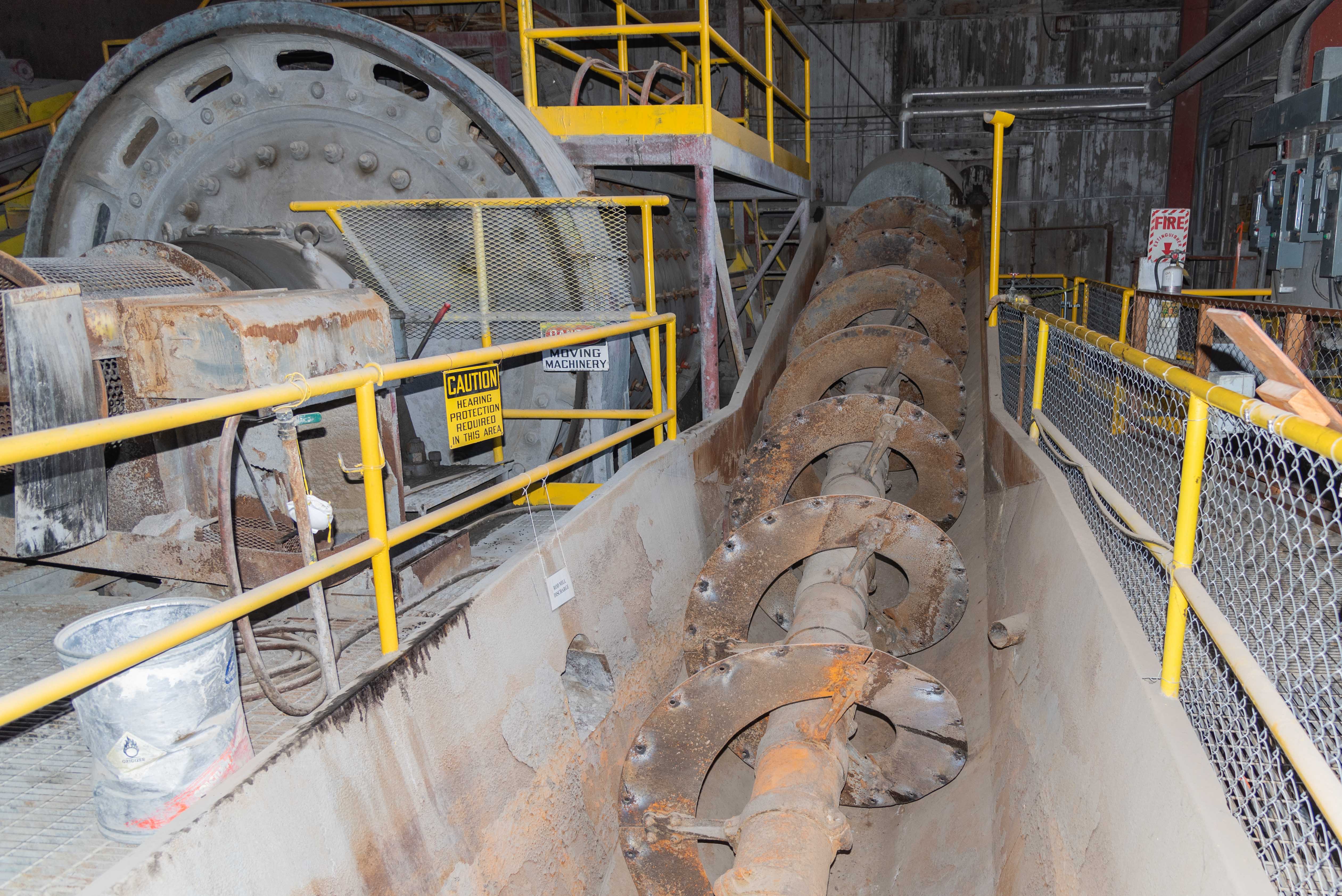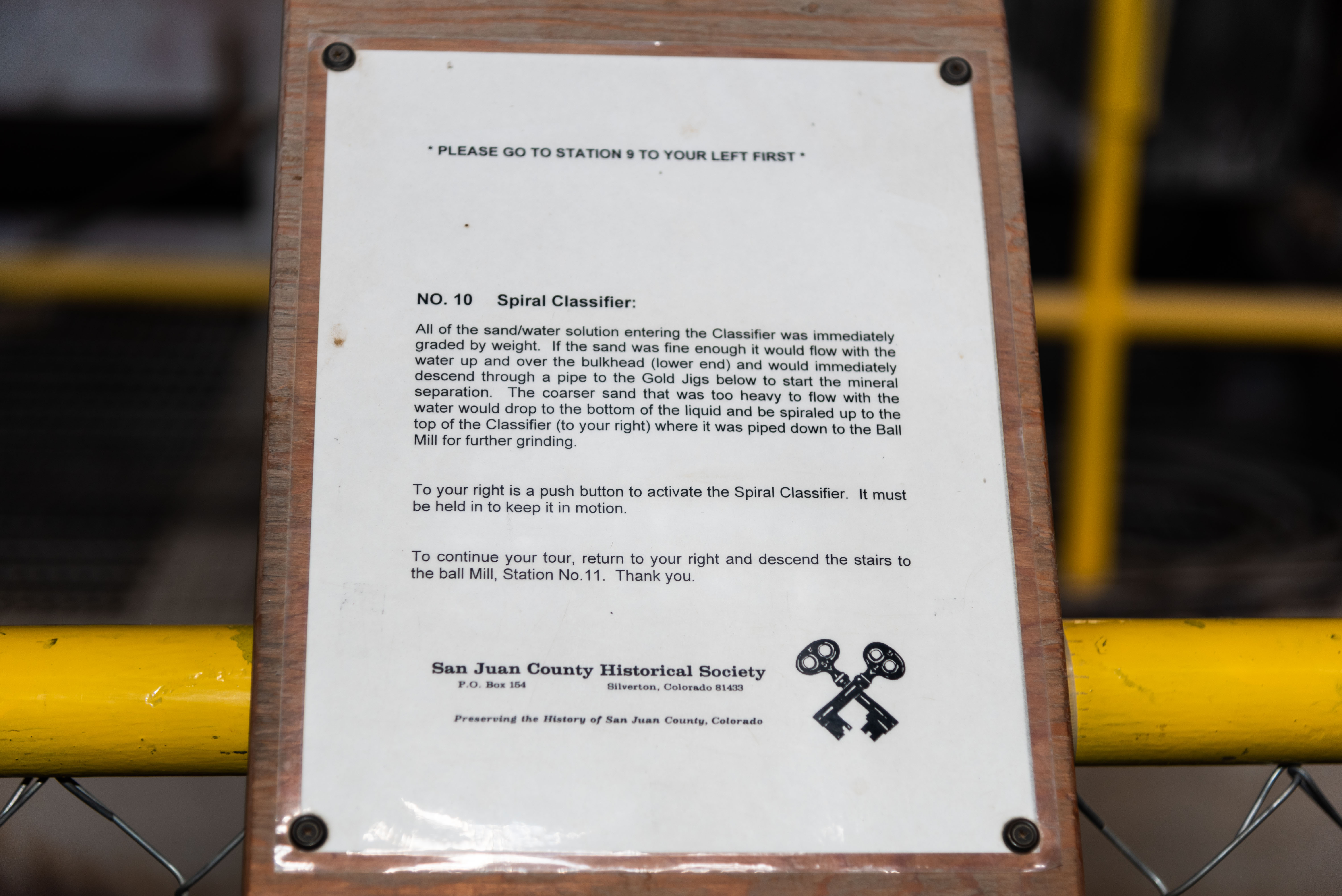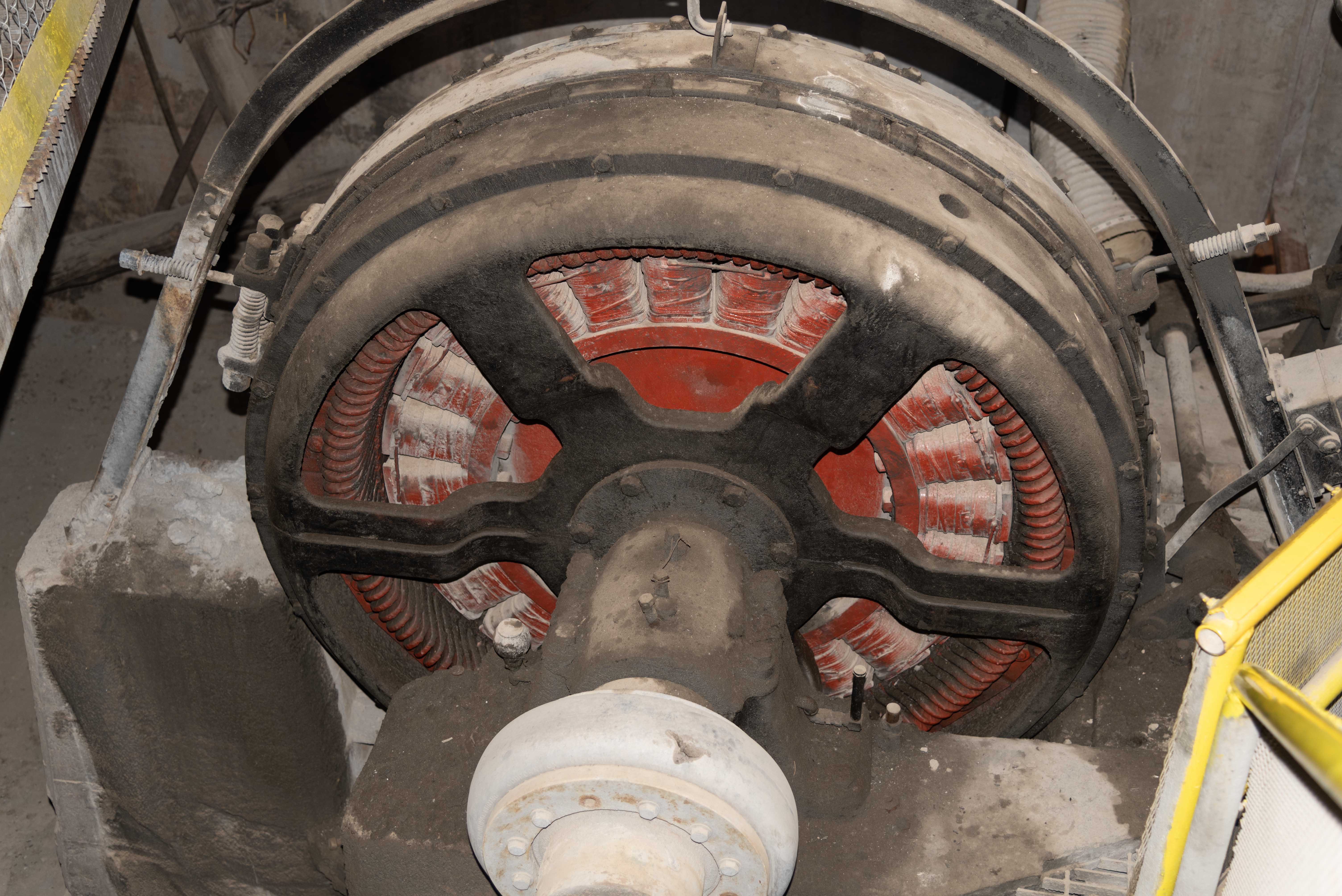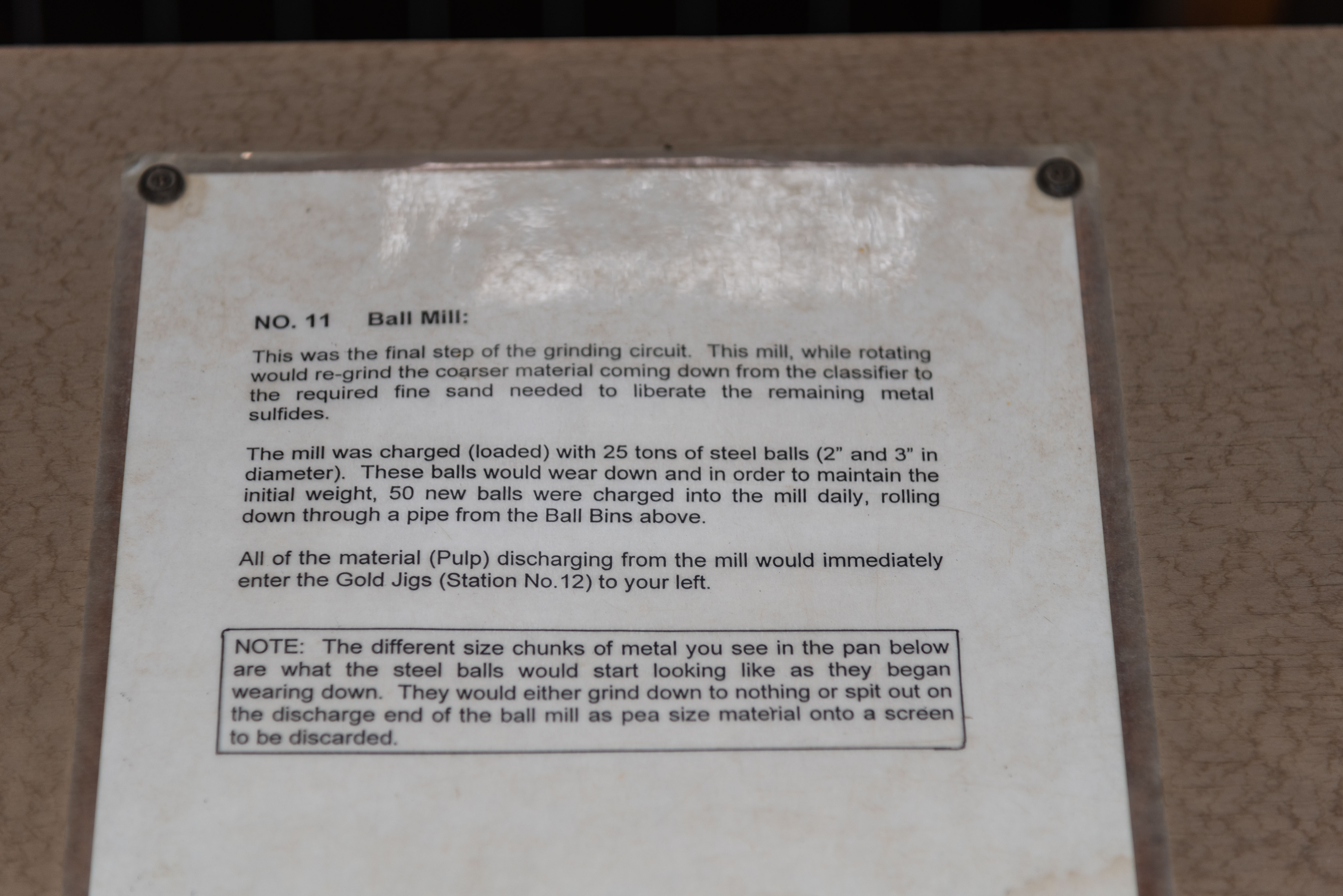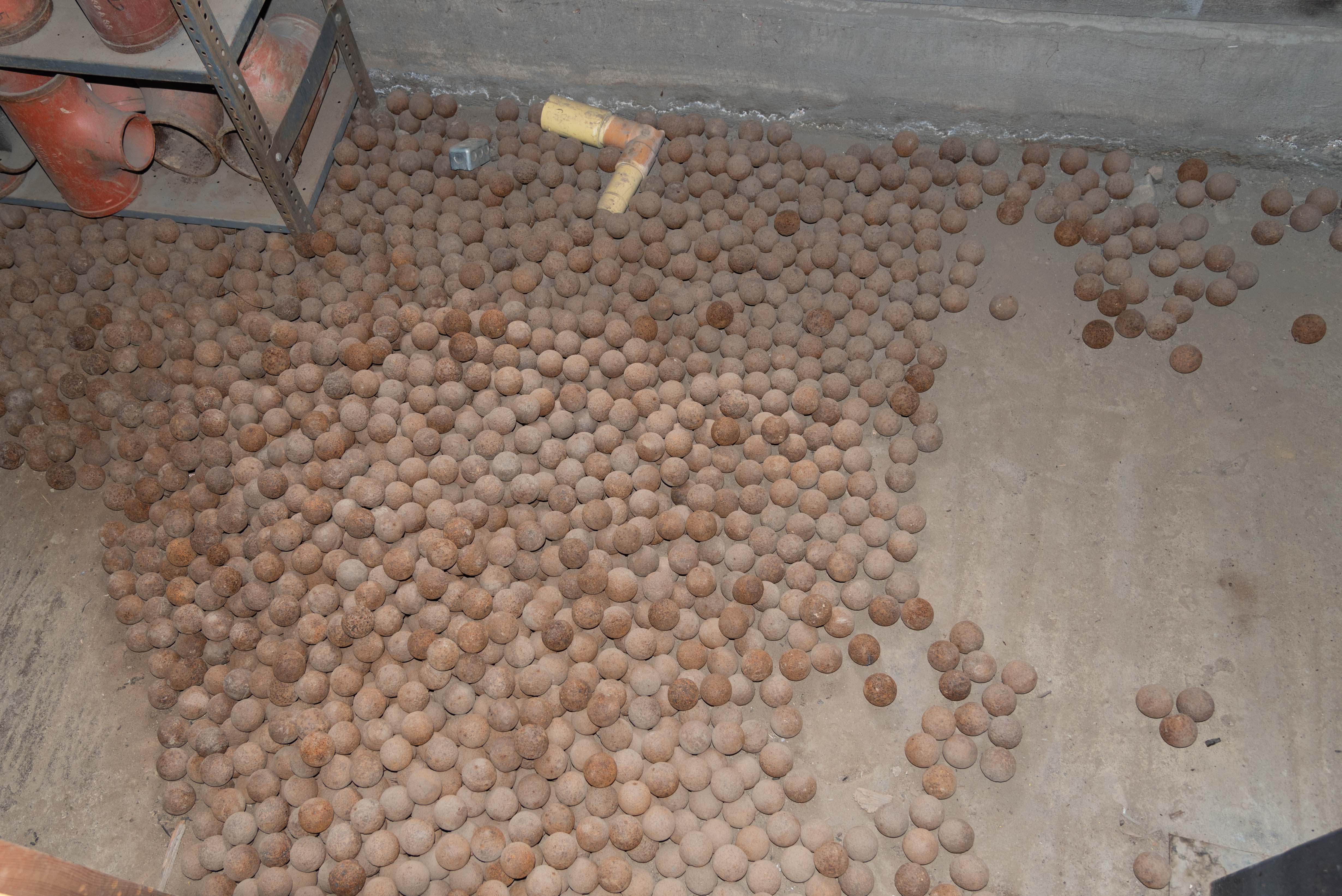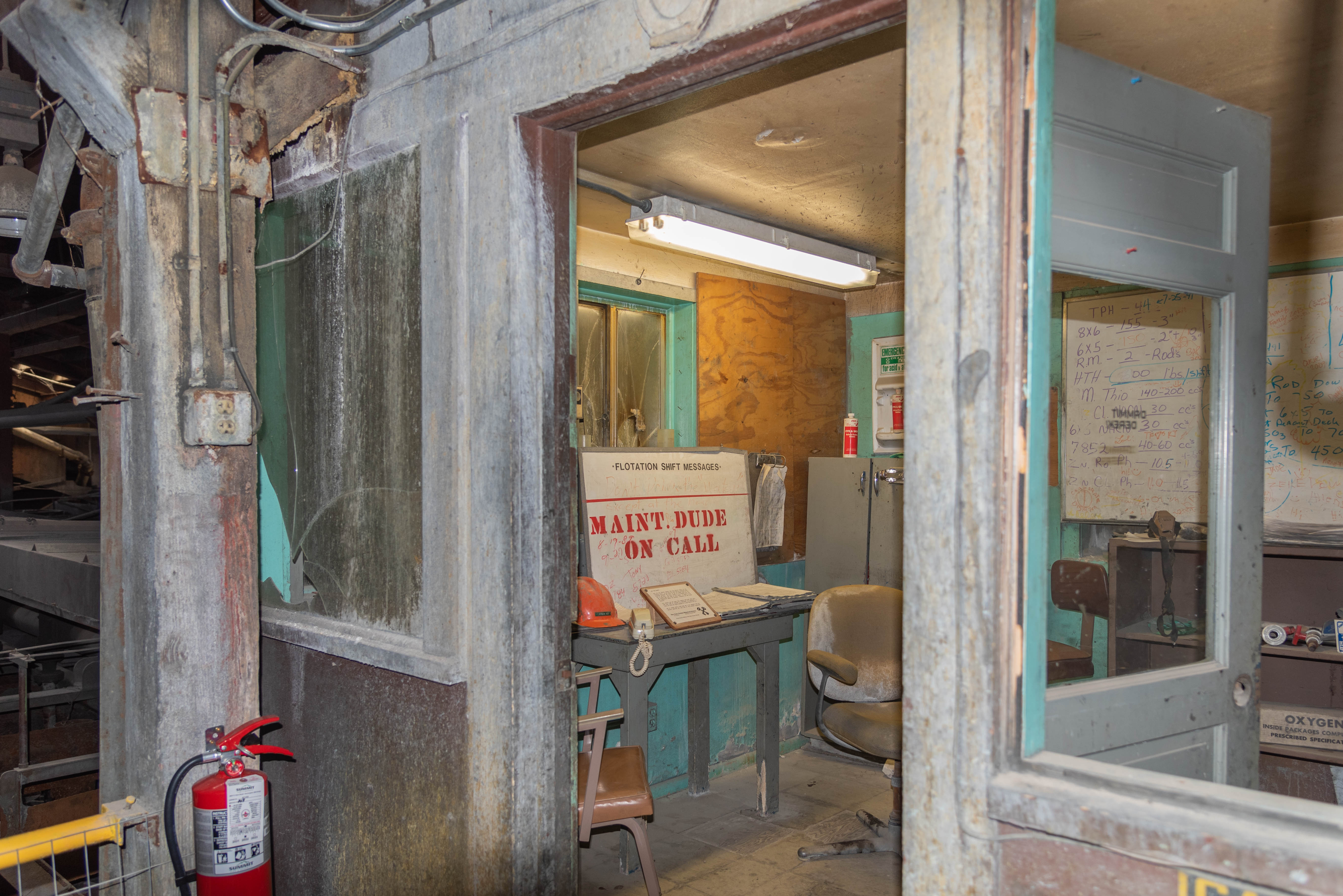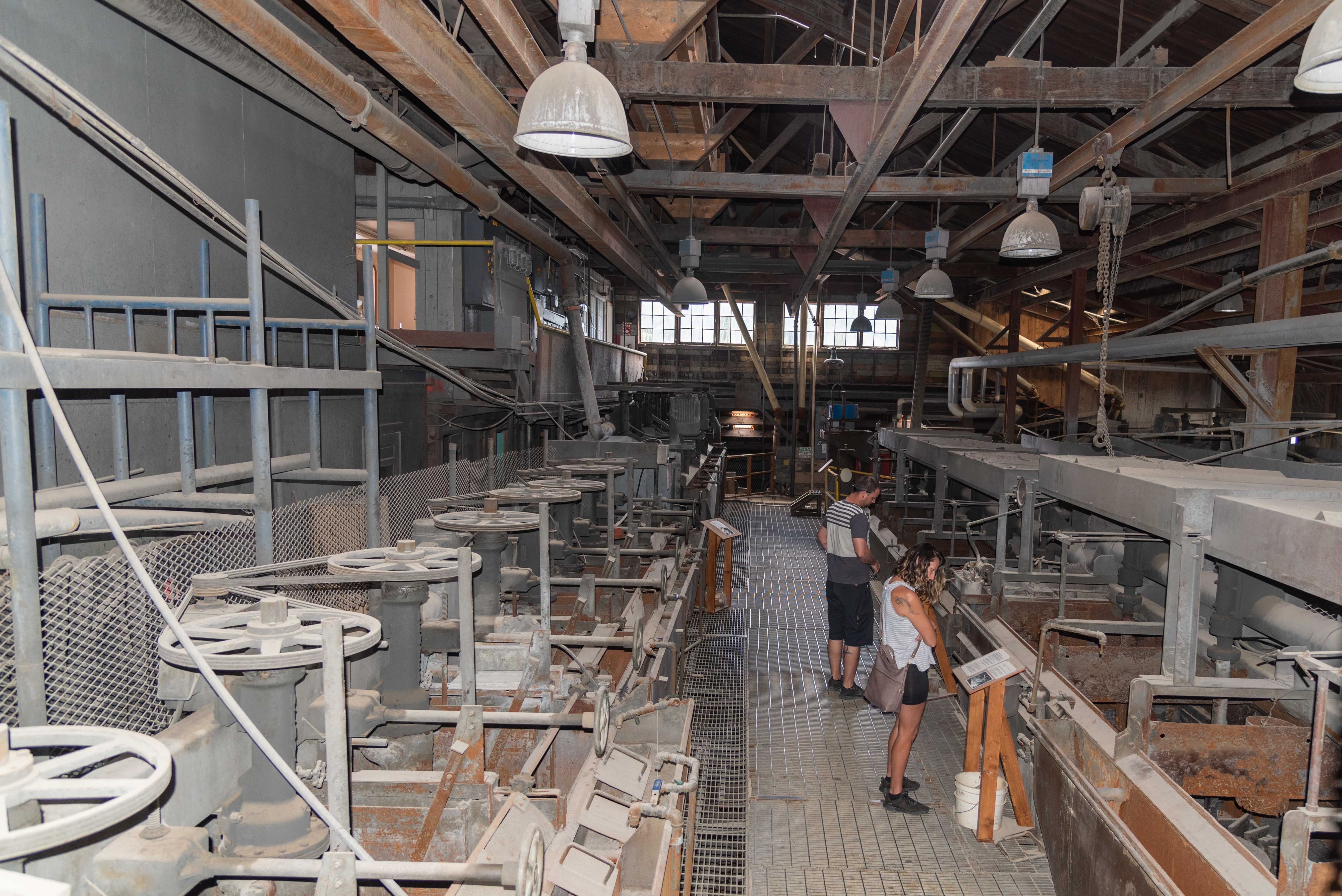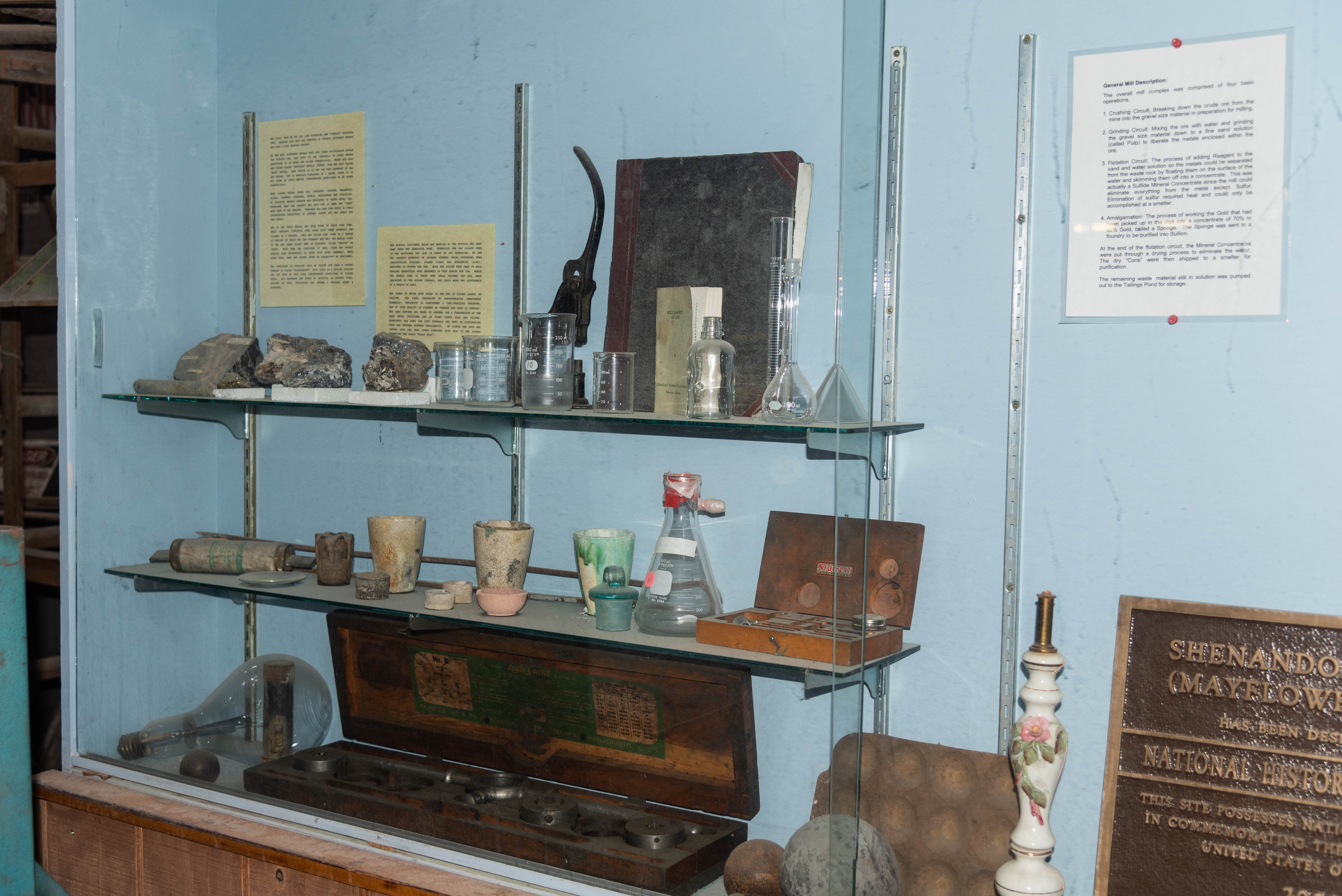Mayflower (Shenandoah-Dives) Mill
The Mayflower Gold Mill is located just off of San Juan County Road 2, about two miles east of Silverton.
Inspiration for the Mill came from Charles A. Chase, the mine manager of the Liberty Bell near Telluride.
The contract for construction of the mill was signed in the spring of 1929 at a cost of $375,000. Construction was completed
in six months, and the mill started processing ore in February of 1930.
The Mayflower Mill operated for 49 years from 1930 to 1991 (12 years downtime). During that period the mill produced 1,940,100 ounces
of gold; 30,000,000 ounces of silver; and 1,000,000 tons of combined base metals (lead, zinc, and copper). Most of the ore processed
by the mill came from the Mayflower Mine, located high up the eastern side of Arrastra Gulch.
The Mayflower Mill was the last of the big mills to be built in the San Juans. It was declared a National Historic Landmark in 2000.
The Mill is now owned by the San Juan County Historical Society of Silverton. Mayflower Mill is open for self-guided tours from the
end of May through the middle of October. Adult admission is $10. I visited and photographed the mill in Sept of 2022.
Tram House
Ore was transported from the Mayflower Mine by an aerial tram to the tram house
where it was transfered to a conveyor that carried it to the mill. The aerial
tram, tram house, and its operators were considered a separate department from the mill.
Scenes from the 1957 movie "Night Passage" staring James Stewart were filmed in the
tram house.
The Mill
Ore was processed in the Mayflower Mill in a series of 4 "circuits":
1. dry crushing, 2. wet grinding, 3. flotation. and 4. concentration. The ore is crushed
to gravel about 3/8" in diameter by the Symons cone crusher (step 1). This gravel is mixed
with water and ground in the rod and ball mills into particles somewhere between 0.295 and
0.074 mm in size (step 2). The mixture of these particles and water is called pulp.
The pulp is then fed into flotation cells where it is mixed with reagents and aerated.
The air bubbles become coated with sulfide minerals, rise to the surface, and collect as a mineralized
froth (step 3). In the last step the froth is filtered or skimmed off and dried into a concentrate,
ready for shipment to a smelter for final purification. Gold is collected by a separate process of amalgamation.
A good machine shop was crucial to the operation of any mill. The Mayflower Mill machine shop was well equipped with a metal lathe, shaper, drill press, and electric arc welder. A crew of 6-8 men was responsible for maintenance and repair of all of the mill machinery.
Background info: sanjuanhistoricalsociety.org, historycolorado.org
Use the form on the Home Page to submit comments, questions, or suggestions. TD Productions Copyright © 2022
